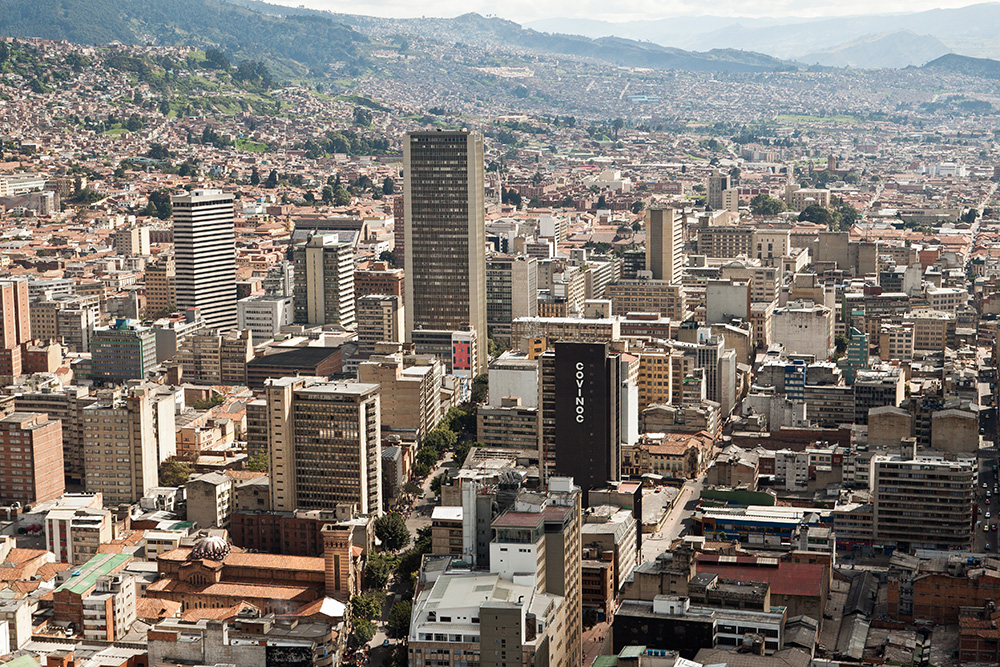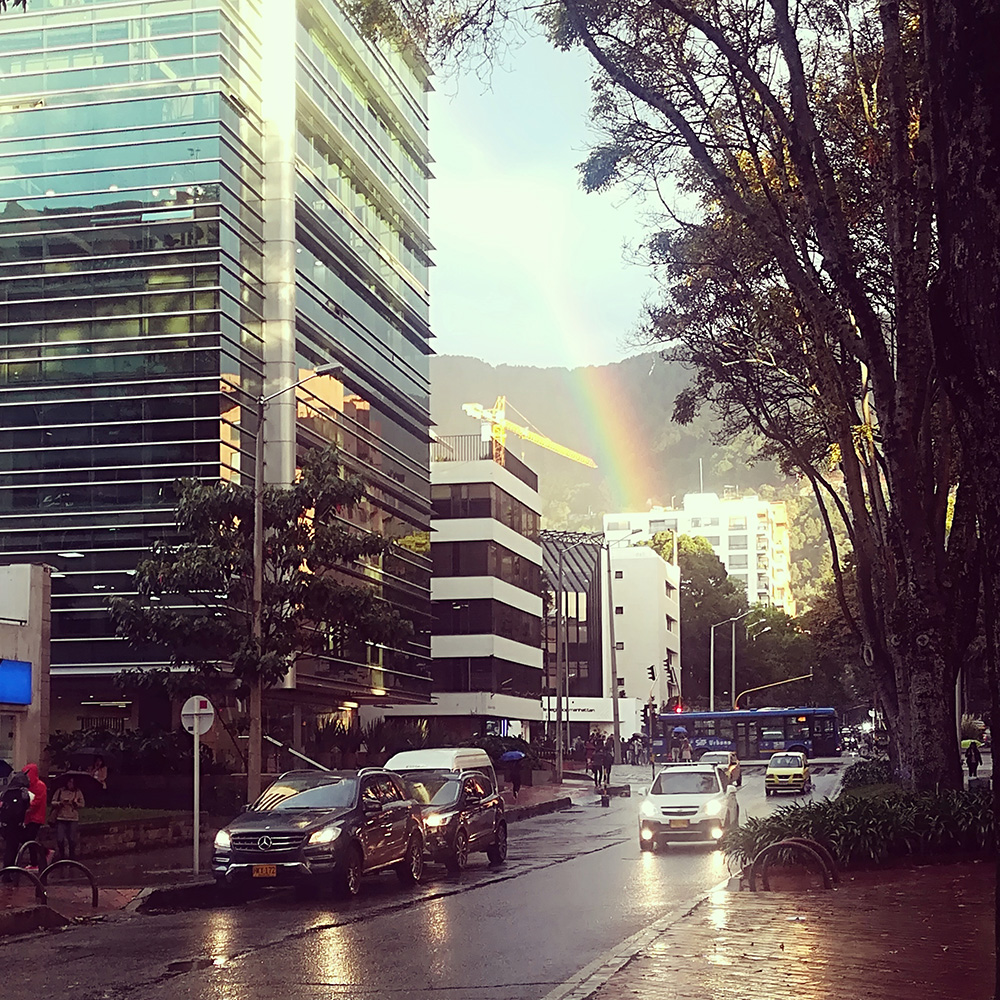
Cutting speeds on key corridors offers cities a simple and cheap way to reduce serious accident rates and fatalities. Happily, such measures can have an especially positive impact in less economically-advantaged urban neighbourhoods, a new study demonstrates.
Researchers in Bogotá, Colombia, began a study in 2018 of five traffic corridors that were the source of the city’s highest concentration of traffic crash victims. The study compared the impact of the measures on accident rates before and after the speed limit was reduced in these corridors from 60 to 50 km/h.
Crunching the numbers, the researchers found that average traffic speeds fell by 3km/h in the corridors where the limits were introduced. Average speeds also fell by 2.2 km/h in those corridors without the speed management measures in place, an example of the ‘network’ effect at work where motorists slow down because they assume measures in one area are more broadly applied across a city.
While these results were not surprising - previous literature indicates that such reductions were to be expected - the reduction in fatalities and serious injury exceeded expectations. Fatalities fell by 16.6% where speed reductions had been introduced, more than the 12% that could typically be expected from such measures.
The number of ‘runover’ events - closely associated with pedestrian fatalities - fell by 11% in the corridors concerned and by 9% city wide.
Counterintuitively, the total number of crashes actually rose. However, this is likely owing to improvements to the way crashes were reported during the time of the study and this negative result must obviously be set against the fall in deaths and serious injuries, says study leader Segundo López, international data coordinator at the World Resources Institute.
“Pedestrian runovers decreased a lot. Fatalities decreased in the whole network and at night-time most of all. Lowering the speed limit decreases speeds in other uncontrolled corridors, especially at night,” says López.
While the findings match those of prior studies carried out in Europe, they prove the efficacy of the measures studied in the context of a city like Bogotá, says another of the study’s authors, David P. Barbosa, mobility and road safety advisor at WRI Ross Center. “We knew this would save lives but we still have to show it works here.”
Minimal mobility trade-offs
In the light of the findings of the paper, Effects of Reducing and Enforcing Speed Limits in Selected Arterial Roads in Bogotá, published by the Engineering, Social Justice and Peace International Journal, the city has expanded its speed management plan. Since May 2020, it has capped speeds to 50 km/h in all arterial corridors, the first Colombian city to do so.
A further benefit of the study, says López, is that the measures smoothed traffic flows and did not appreciably slow overall journey times, demonstrating the minimal mobility trade-offs of the measures.
The study clearly demonstrates a need for more corridor-level speed enforcement and will be a great benefit to traffic managers in Bogotá and beyond looking to improve crash hotspots by giving them the proof of efficacy to justify further measures.
The data on the project, partly funded by the Bloomberg Initiative for Global Road Safety, was gathered pre-pandemic and López says the Institute is now in the process of studying traffic and crash patterns since then.

“Bogotá implemented speed cameras in 2020, lowered the speed limit more broadly and also has implemented bike paths. We want to study the impact of those measures. We see preliminary evidence that speed cameras reduced victims. Average speed increased while speeding decreased. The traffic was steadier.”
Wider adoption
A follow-up study will establish the working assumption that the wider adoption of the new speed limit as well as the introduction of speed cameras to the city will result in even lower crash rates, serious injuries and deaths. “Fatalities are twice the amount where there are not speed cameras [present],” says Barbosa.
This more significant monitoring and enforcement can be expected to have an especially large impact on daytime fatalities, he adds, and there is much which other cities can apply in the light of the Bogotá experiment. “We are hoping other cities around the world will use speed management as the key component, especially in lower-income countries because this systemic way of doing speed management measures has proven to be one of the most cost-effective measures,” he adds.“In Bogotá the costs were really low.”
The measures can also have a disproportionate benefit in relatively disadvantaged areas, adds Barbosa. Deaths and serious injuries were reduced in low-income areas of the city, offering a great cost benefit in terms of social impacts too.
The ideal approach, budgets permitting, is likely to comprise a mix of speed management measures from speed limits and enforcement, together with infrastructure such as speed bumps, chicanes and pedestrian refuges. Enforcement is likely to be even more effective with regularly-spaced speed radar or camera locations along a section of roadway as this conveys the impression that every motorist is under surveillance, says Barbosa.
Two wheels bad?
More study is also needed relating to motorcyclists. The study data indicates that crash frequency increased around 1km from police control points, suggesting that the more rapid acceleration of bikes when their riders were less concerned about speed checks resulted in more crashes.
The aim now is to better model the causes of motorcycle crash rates and so understand in more detail how they can be reduced, says López. “We are running a geographical model for understanding more about motorcycle safety. We found that motorcycle crashes were more sparsely distributed in the city and more difficult to predict.”
There are some clues as to where such studies might be focused. Motorcycle crashes are more frequent in multi-way boulevards, for example, particularly at points where there are more options to change direction.
Further scope for improvement here will likely involve modifying the geography of access points from central to side roadways, says Barbosa. “Narrower lanes could help too. They help general road safety but could help motorcycle safety a lot more, if properly implemented. The wider the roadway, the higher the risk for motorcyclists.”
This is an important area of study given the high use of motorcycles among citizens in lower socio-economic groups, adds López. “In Colombia there is a perception that motorcyclists are out of control and that motorbikes should be discouraged but they do have a social impact. Most people using bikes are from low-income areas where there is not much access to public transport.”
Gathering data, measuring impacts
A prior study from the World Resources Institute, Using Big Data for Improving Speed Enforcement and Road Safety Engineering Measures: An Application in Bogotá, Colombia, had already demonstrated the link between speeding and traffic crash severity and fatalities in the city. It had examined the potential to use geocoded speed data and casualty data to help target speed enforcement as a way to achieve the greatest safety impact with limited resources.
This initial study suggested that almost 80% of fatalities along the city’s arterial routes could be avoided by applying speed enforcement measures.
For the study of the actual enforcement measures, the researchers gathered data from the city’s 350 WiFi/Bluetooth traffic sensors, that capture mobile phone signals from smart phones, registering anonymised time and date data. Bogotá’s speed database captures around 300 speed samples per hour per road segment.
The researchers compared speed records during three different periods from November to February between 2017 and 2019, along with the data on road crashes with injuries and fatalities during that period.
As well as the positive impacts on crash severity and fatalities, the financial benefits are clear too. The deaths avoided as a result of the traffic management measures saved the city an estimated $12.6 million. Given the $2.3 million invested to achieve this, the cost-benefit ratio was 5.81.











